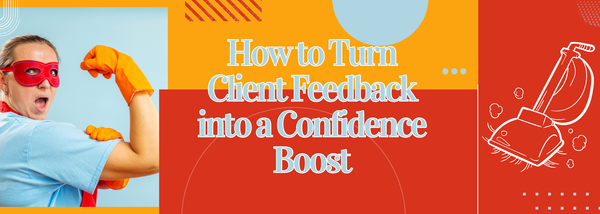10 Time-Saving Tips for Residential Cleaners
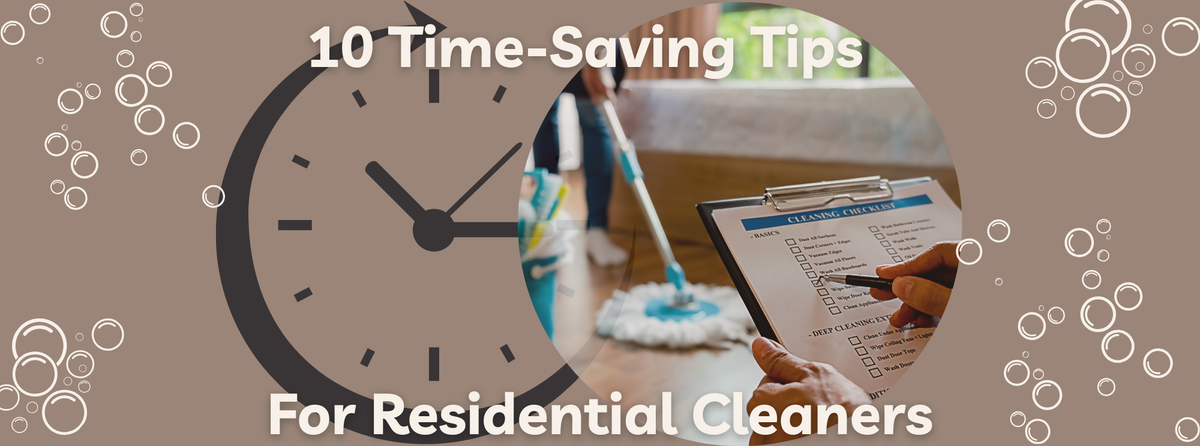
10 Time-Saving Tips for Residential Cleaners
As a residential cleaner, your time is precious. The more efficient your cleaning routine, the more homes you can clean, and the more you can grow your business. But efficiency doesn’t mean cutting corners—it’s about using smart techniques to get more done in less time while maintaining the quality your clients expect. Whether you’re just starting out or looking to refine your routine, these 10 practical time-saving tips will help you breeze through your cleaning tasks without sacrificing quality.
1. Create a Cleaning Checklist
Having a checklist ensures you never miss a task and it helps you follow a consistent routine. A well-thought-out checklist is your secret weapon for staying organized and avoiding missed tasks. Start by listing all the tasks for a standard cleaning session. For example:
- Dust surfaces
- Clean mirrors and windows
- Sanitize countertops and sinks
- Vacuum and mop floors

Follow the same sequence every time to establish a rhythm. By sticking to this routine, you’ll work faster and build a reputation for consistency and eliminate time spent deciding what to do next. You can even tailor checklists for different types of cleanings, such as deep cleans or quick touch-ups.
2. Use Multipurpose Cleaners
Instead of juggling a different product for every surface, opt for multipurpose cleaners that work on countertops, glass, and other surfaces. This reduces the number of items you carry and speeds up the cleaning process.
- Use a vinegar-based cleaner for streak-free glass and grime-cutting power.
- Find products labeled as safe for multiple surfaces to minimize product changes. Here are a few of the best ones to get you started:
With the right product in hand, you’ll spend less time switching between bottles and more time cleaning.
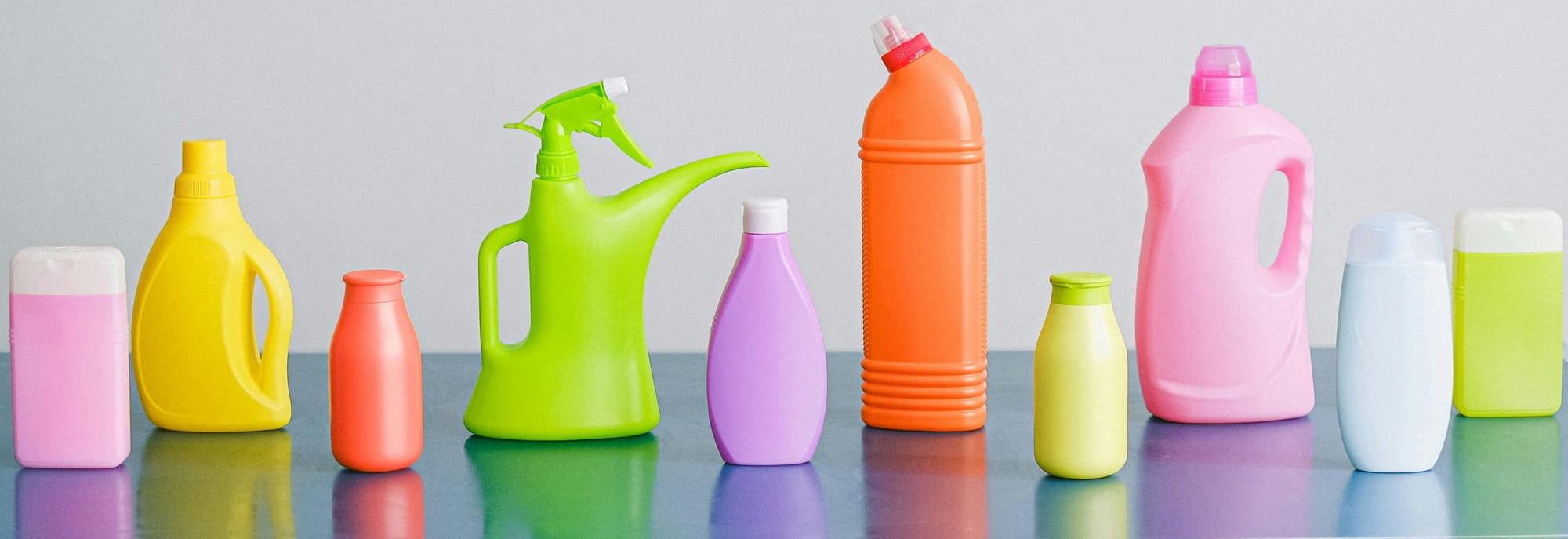
3. Invest in Quality Tools
High-quality tools can significantly cut cleaning time and reduce your workload. For example:
- Microfiber cloths: These trap dust and debris better than traditional rags, reducing the number of passes needed to clean a surface.
- Cordless & Backpack vacuums: Skip the hassle of plugging and unplugging as you move through rooms. Using a backpack style vacuum can help you move around more easily, especially on stairs.
- Extendable dusters: Clean ceiling fans and high shelves without a step stool.
These tools may cost more but over time these investments will save you time and effort, every single day.
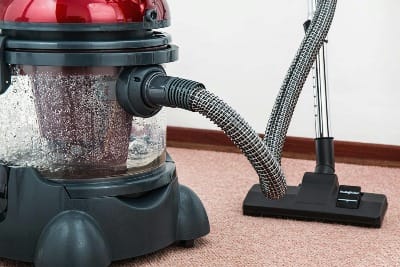
4. Clean Top to Bottom
Cleaning from top to bottom is a simple yet powerful technique that saves time and effort. By starting with higher surfaces—like ceiling fans, shelves, or light fixtures—you allow dust and debris to fall naturally to the lower areas. Once the top is clean, you can move to furniture, countertops, and finally the floors.
For example, if you vacuum first, you’ll just end up doing it again after wiping dusty surfaces. Cleaning in this order ensures every area gets attention without unnecessary repetition.
This classic cleaning rule prevents you from doubling your work. It’s a small change that delivers big results!
5. Pre-Treat Tough Spots
Spray cleaners on problem areas like stovetops, sinks, or bathtubs at the start of your cleaning session. While the solution works its magic, you can move on to other tasks and return to wipe away grime with minimal effort. For instance:
- Spray the stovetop and let it sit while you wipe counters.
- Apply cleaner to the tub and return to scrub after finishing the sink.
This approach minimizes scrubbing time, making tough jobs more manageable.
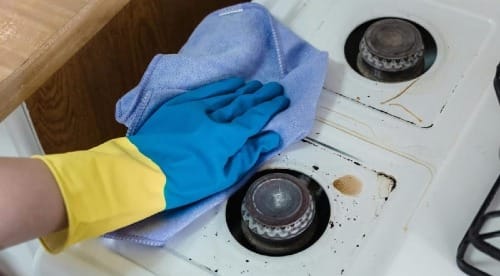
6. Declutter Before Cleaning
Clutter on surfaces can be a huge time-waster. Encourage your clients to tidy up their personal items before your arrival, or offer to include a quick decluttering service as part of your routine. For example:
- Gather scattered toys into a bin before vacuuming.
- Clear counters of mail or dishes to clean them thoroughly.
With surfaces clear, you can clean more quickly and thoroughly.

7. Batch Similar Tasks
Instead of switching back and forth between tasks, group similar ones together. Jumping between tasks can slow your momentum. Instead, group similar jobs together. For example:
- Dust every room in one go before moving to windows.
- Vacuum the entire house before switching to mopping.
This batching method keeps you in a rhythm, helping you complete each task more quickly and efficiently and avoids the inefficiency of frequent tool changes.
8. Set Time Limits for Each Room
Using a timer for each room can help you stay focused and avoid spending too much time in one area. Challenge yourself to meet your goals while maintaining quality. For instance:
- Allocate 15 minutes for the living room, 10 minutes for bathrooms, etc.
- Challenge yourself to beat the clock while maintaining quality.

Over time, you’ll develop an intuitive sense of how long each room should take, helping you plan your day more effectively.
9. Use a Cleaning Caddy
Keeping all your essential supplies in a portable cleaning caddy or apron is a game-changer. Having everything within reach eliminates the need for multiple trips back to your cleaning bag or closet, saving precious minutes. Stock it with your essentials, such as:

Having everything at your fingertips eliminates time wasted searching for supplies or running back to your cleaning bag or vehicle. It’s a small change that makes a big difference.
10. Evaluate Your Routine Regularly
No matter how good your system is, there’s always room for improvement. Take time to reflect on your routine every few months. Are there tools or techniques that could make you faster? Staying open to change will help you stay efficient in the long run. Efficiency isn’t static—it’s something you can continually improve.
- Are there tools that could speed things up?
- Are certain tasks taking longer than they should?
- Is there a better sequence to follow?
For example, you might find that switching to a lightweight mop cuts cleaning time for large floors in half. By staying flexible and open to change, you’ll keep refining your system and maximizing your efficiency.
Conclusion
Saving time as a residential cleaner is all about finding smart strategies to streamline your routine and work more efficiently. By implementing even a few of these tips, you can free up time while delivering the same high-quality results your clients expect. Whether it’s investing in better tools, batching tasks, or sticking to a checklist, small adjustments can lead to big improvements.
Thank you for checking out my recommendations! I only recommend products I, and others, trust and have found effective.
Which of these tips will you try first? Or do you have a favorite time-saving trick of your own? For more helpful insights and advice, be sure to join our Facebook community, Start & Grow Your Cleaning Business!


